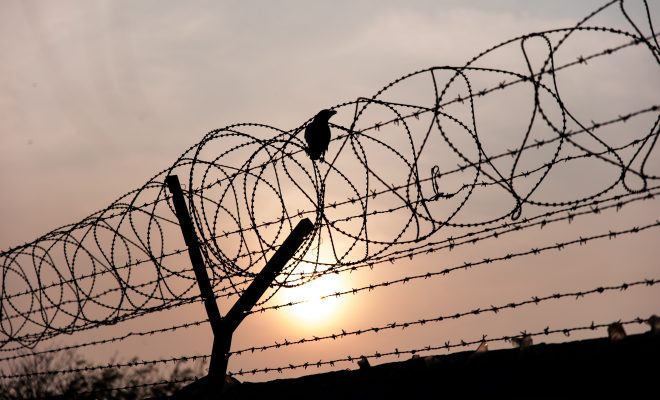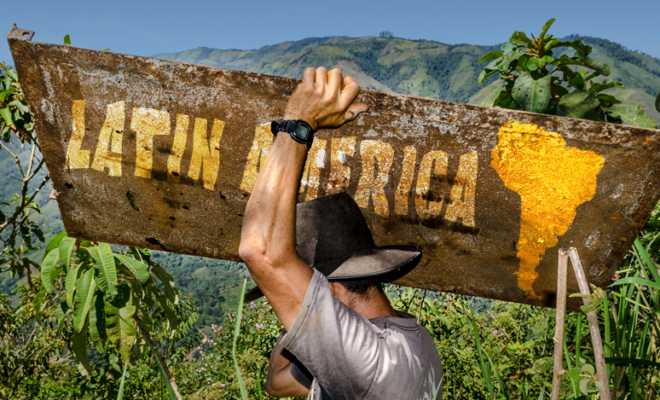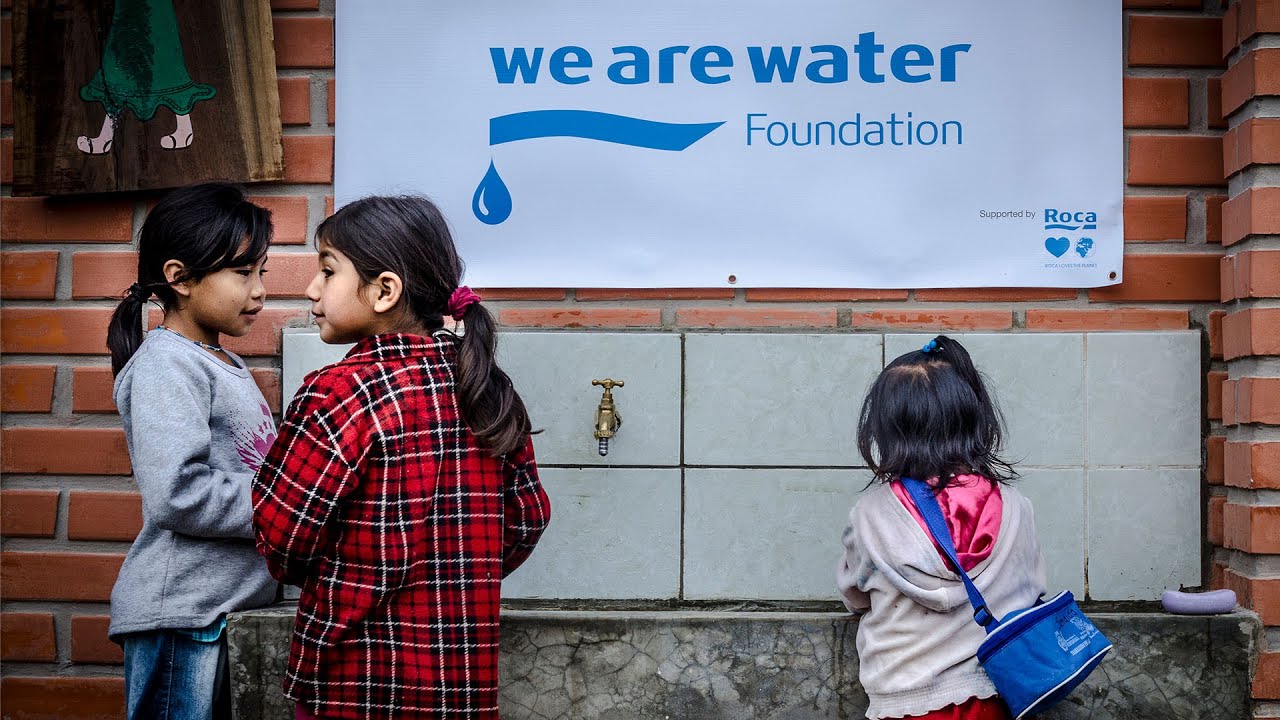
In November 2020, two hurricanes hit Central America in succession. The first one was Eta, a category 4 out of 5. Three weeks later, a new hurricane, Iota, reached category five and almost destroyed what little had been saved from the first one.
More than nine million people were affected in Guatemala and Honduras, and, according to UNICEF, around 3.5 million children were left homeless. Both events left some 200 dead, dozens missing and destroyed most of the crops, water and sanitation facilities, roads, and factories. Amidst the Covid-19 pandemic, the hurricanes affected more than 1.6 million people who, according to the Integrated Food Security Phase Classification (IPC), were in phase 3: “Acute food and livelihood crisis.” In Honduras, wind and floods destroyed more than 91,000 houses, leaving more than 4.5 million people affected, and 80% of crops were damaged.
This natural disaster devastated one of the regions of the world most hit by violence, poverty, and institutional neglect. The same happened in October 1998, when hurricane Mitch reached category five and left historic amounts of rainfall in the so-called Northern Triangle (Honduras, Guatemala, and El Salvador) and Nicaragua, where almost 20,000 people died (around 14,000 in Honduras), and about 8,000 disappeared. The floods caused losses of USD 5 billion.
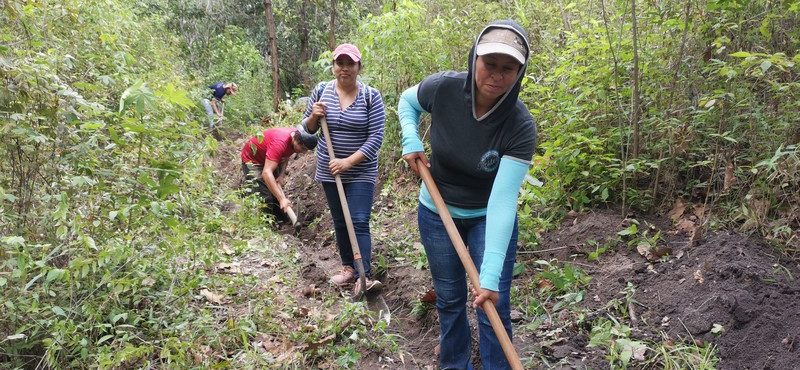
A new aid project brings us closer to the plight of Honduran farmers © World Vision
Compelled to continuous resilience
Fourteen months after the Eta and Iota disasters, Honduras has not recovered. This has seriously compromised the health, especially of schoolchildren, and the proper management of natural resources, one of the natural capital potentials of Central America.
This is what happens in the El Paraiso department, one of the most severely affected by the hurricanes that have impacted communities with poor hygiene habits that generate health risks. This increases their vulnerability to the coronavirus pandemic or to future natural disasters expected in the area due to climate change. We have started a project in the area in collaboration with World Vision to provide access to water and sanitation that will benefit more than 5,700 people who suffered the consequences of meteorological violence. The project places particular emphasis on training and the transversal participation of the community to achieve the resilience and efficiency of the facilities. This includes training on the proper management of micro-watersheds and mitigation plans to reduce the effects of extreme weather events.
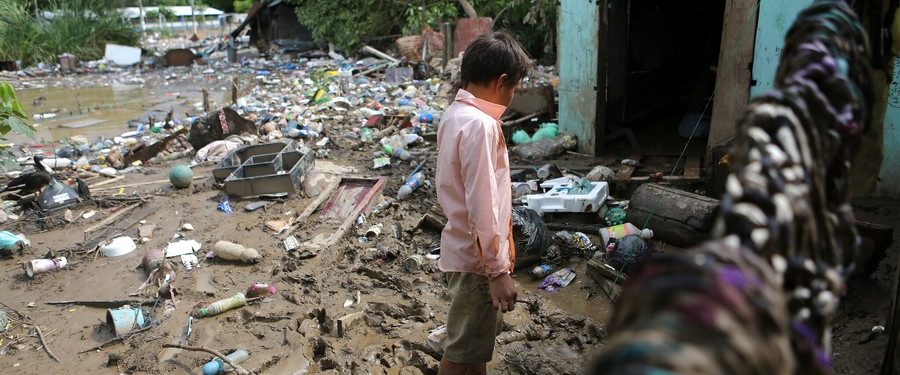
Fourteen months after the Eta and Iota disasters, Honduras has not recovered. This has seriously compromised the health, especially of schoolchildren. © EU Civil Protection and Humanitarian Aid
All this must ensure that the ancestral resilience of these communities, developed through enduring disasters, leads to practical solutions that will be the foundation of economic development, allowing them to leave poverty behind and make the most of their rich biodiversity. The mountains and deep valleys in Honduras are one of the Earth’s most significant reserves: there are around 8,000 species of plants, about 250 species of reptiles and amphibians, more than 700 species of birds, and 100 species of mammals.
A subsequent goal: curbing migration
The rural areas of Honduras need water and sanitation to see a future without poverty and hope for development. For decades, these regions have been one of the country’s primary sources of internal and external migration. The drama of migration became particularly relevant in 2018 when a movement of Hondurans began towards Mexico with the idea of seeking asylum or reaching the United States. This was followed by a relentless flow of Guatemalans and Salvadorans. According to a study by the Inter-American Development Bank (IDB), by December 2019, 9% of the population of El Salvador, Guatemala, and Honduras had moved to the US; a total of three million people, 60% of whom were irregular. Seventy-four percent of migrants fled poverty, 43 percent sought family reunification with previous migrants, and 41 percent wanted to escape violence in their countries. This is a distressing factor in addition to poverty. Endemic violence is another significant “flight or die” motivation for many border crossers: they come from one of the world’s most violent regions.
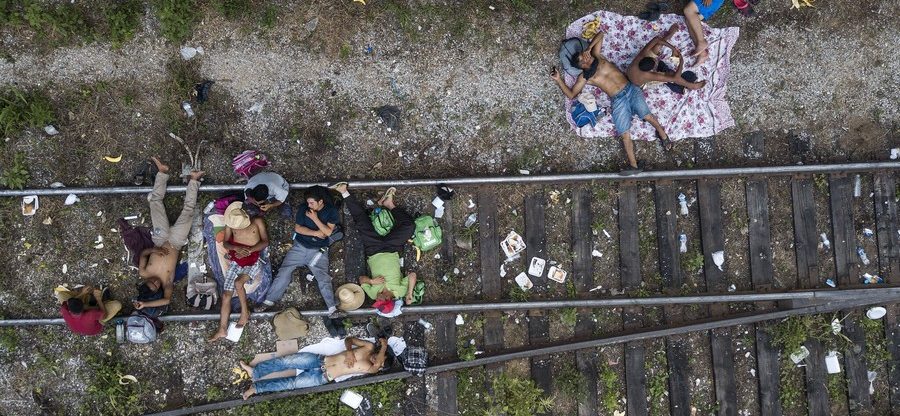
According to a study by the Inter-American Development Bank (IDB), by December 2019, 9% of the population of El Salvador, Guatemala, and Honduras had moved to the US. The plight of migrants from the Northern Triangle shows no sign of abating. © EU Civil Protection and Humanitarian Aid
The plight of migrants from the Northern Triangle shows no sign of abating. The United Nations Office for Refugees (UNHCR) estimates there are around 470,000 refugees and asylum seekers from this region globally, of which more than 97,000 are in Mexico, while in Honduras and El Salvador alone, there are more than 318,000 internally displaced persons. Although the outbreak of the Covid-19 pandemic and its virulence in the US and Mexico significantly slowed down the flood of migrants, according to the Mexican government, in 2021, asylum applications in the country have increased again, doubling the figure for 2020: 31,894 compared to 15,398.
Covid-19 increased the vulnerability of those already living in overcrowded conditions and appalling sanitary conditions, with difficulties obtaining water and sanitation and lacking the most basic hygiene practices to curb the pandemic. This is why last year we initiated a project with World Vision in the border area of Tijuana, in the Mexican state of Baja California, to combat the spread of the coronavirus by increasing access to hand-washing facilities and the availability of soap and water in migrant care centers.
A country lacking water, sanitation, and political stability
In Honduras, natural disasters have hit a population suffering from a lack of access to water and sanitation, with little improvement for decades. With barely 10 million inhabitants, despite being one of the countries with high water availability (at least 87 billion cubic meters per year), the data on access to water does not correspond. This is a situation found in many tropical countries with high rainfall but with a structural deficit in supply.
Data from the Joint Monitoring Programme for Water Supply, Sanitation and Hygiene (JMP) confirm these shortcomings. In rural areas, the 2020 data indicated that only about 770,000 Honduran farmers have secure access to water, 18.71% of the population, an insignificant improvement from 18% in 2015. The vast majority of farmers, 71.16%, have a supply classified as “basic” by the JMP, i.e., they have a source that meets safety requirements (improved source) except it is not located in their homes, but the time spent going, waiting and returning to fetch it is no more than 30 minutes. However, in 2020, 384,000 Honduran farmers still had an unimproved source as their only source, i.e., from dug wells or unprotected and unsafe springs.
In terms of sanitation, open defecation still persists in the Honduran countryside, with some 344,000 practicing it, representing 8.34% of the population. However, there have been notable improvements compared to 2015, when it was 14.4%. Those with safely managed facilities reached almost three million in 2020, more than 70 percent of the population, up from 64.04 percent in 2015.
On the other hand, the Honduran people have been suffering for decades from political instability, corruption, and violence, along with the scourge of hurricanes. After the unfortunate 1969 war with neighboring El Salvador, Honduras has suffered from the conflicts in neighboring countries and the general hostility of Central America. So far, government efforts have had little success in addressing the high levels of social conflict and pockets of poverty.
In addition to the need for effective governance, Honduras also needs to develop strategies to deal with climate change, the effects of which are already being felt in the form of an increase in average temperatures and unusually erratic rainfall. IPCC forecasts also point to the rise in the number and intensity of hurricanes in the Caribbean. Honduras faces a considerable challenge: building resilience and reducing the risk of natural disasters. To do this, Hondurans need strong universal water and sanitation infrastructure. The world must be aware of their suffering and the difficulties they face to achieve this and help them; their dedication and hard work will do the rest.



